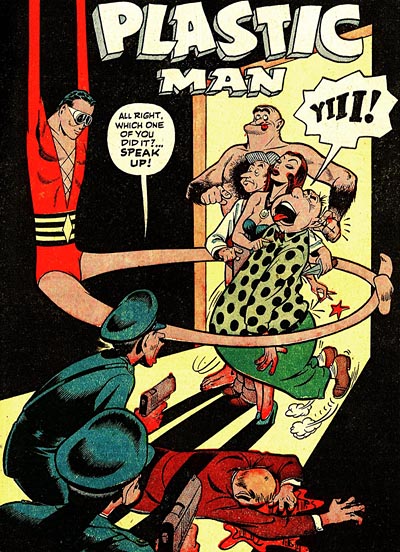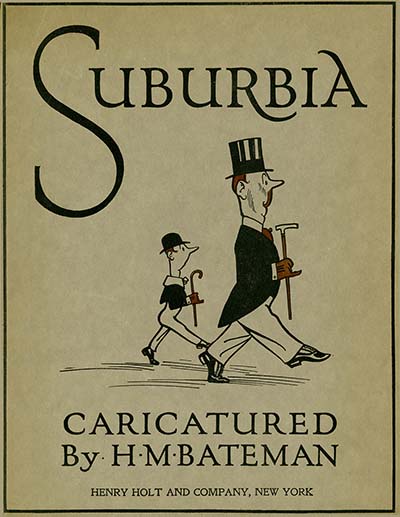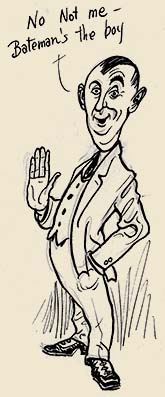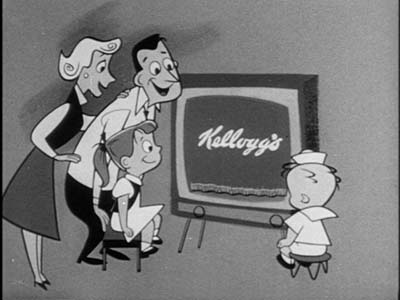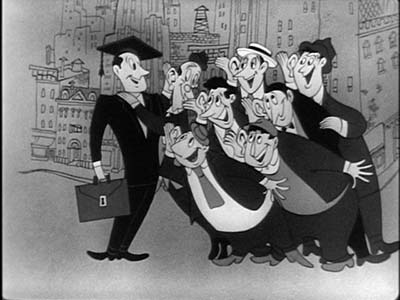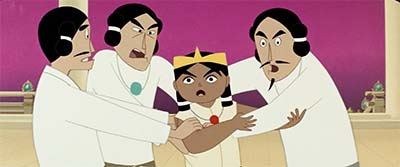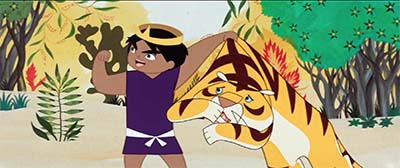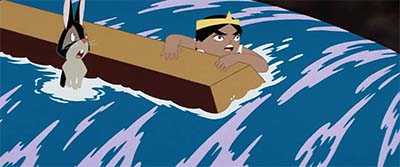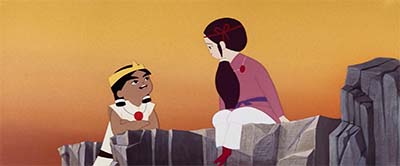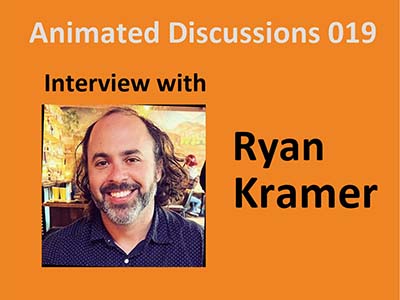
Every month, Animation Resources shares an amazing Reference Pack with its members. These carefully curated collections consist of e-books packed with high resolution scans video downloads of rare animated films set up for still frame study, as well as podcasts and documentaries— all designed to help you become a better artist. Members will have 30 days to download the current batch of treasures from the Animation Archive A new RefPack will be posted at the beginning of the next month. Bookmark the
Members Only Page and remember to check back every month, because when the new month starts, the old downloads go POOF!
MEMBERS LOGIN To Download
JOIN TODAY To Access Members Only Content
The latest Animation Resources Reference Pack has been uploaded to the server. Here’s a quick overview of what you’ll find when you log in to the Members Only Page…
PDF E-BOOK:

Ding Darling Volume 2

Political Cartoons 1919-1920
Download this article
Jay Norwood Darling was born on October 21, 1876, in Norwood, Michigan. His father, Marcellus Darling, was a Civil War veteran and Congregational minister. After sojourns in Cambria, Michigan, and Elkhart, Indiana, the family ended up in Sioux City, Iowa, when Jay was ten. He grew up enjoying the wild spaces along the Missouri River and came to love the prairies and marshes of South Dakota.

 He went to work at the age of twenty-three as a cub reporter for the Sioux City Journal. While writing for the Journal, he continued to draw. He also dabbled in photography and one day was sent to photograph an attorney to accompany a piece he had written. The attorney objected and chased Darling out of the courtroom. Darling substituted a drawing that he had already made of the lawyer, and the editor decided to publish it. It was so successful that Darling was engaged to do a series on Sioux City characters called “Local Snapshots” (1901-1902). This was followed by other series, which lead the Journal to employ Darling as the daily cartoonist.
He went to work at the age of twenty-three as a cub reporter for the Sioux City Journal. While writing for the Journal, he continued to draw. He also dabbled in photography and one day was sent to photograph an attorney to accompany a piece he had written. The attorney objected and chased Darling out of the courtroom. Darling substituted a drawing that he had already made of the lawyer, and the editor decided to publish it. It was so successful that Darling was engaged to do a series on Sioux City characters called “Local Snapshots” (1901-1902). This was followed by other series, which lead the Journal to employ Darling as the daily cartoonist.
Darling worked at the Sioux City Journal for six years, during which time he came to be compared to John McCutcheon of the Chicago Tribune. When George D. Perkins, editor of the Sioux City Journal, ran for governor in 1904 and Darling’s cartoons supported him, the cartoons received state-wide attention. Also during this time Darling was courting Genevieve Pendleton, known to all as Penny, serenading her, to her embarrassment, with his mandolin. On October 31, 1906, they were married in Sioux City. While honeymooning in the West Indies, an offer from the Des Moines Register and Leader reached them. Unbeknownst to them, the timing was perfect, because the editor of the Sioux City Journal was preparing to fire Darling over a disagreement about a portrait that Darling had published earlier in “Local Snapshots.” At the end of 1906, at the age of thirty, Darling began his long career at the Des Moines Register and Leader (later the Des Moines Register). The editor, Gardner Cowles, gave Darling complete artistic and editorial freedom, only sometimes– and rarely– deciding not to publish a cartoon. Darling thrived in this atmosphere, and his reputation grew. The Des Moines Register and Leader could not offer syndication, but, after initial resistance, Cowles permitted Darling to syndicate his cartoons through the New York Herald Tribune. In 1916 Darling signed a ten-year contract with that syndicate, which had 130 client newspapers. Part of this contract required him to spend several days a month in New York, so the family lived there in 1918-1919.

In the early 1930s, he became involved in conservation movements, such as the State of Iowa Fish and Game Commission, and put up $9000 of his own money to help fund the Cooperative Wildlife Research Center at Iowa State College (later Iowa State University). In 1934, he was appointed by F. D. Roosevelt (most of whose New Deal policies he despised as a staunch Republican) to a three man committee to study the conservation of migrating wildfowl, and later in 1934, he was appointed Chief of the Biological Survey, where he implemented the Duck Stamp Act and designed the first duck stamp.

By 1936 he had returned to the Des Moines Register. After 1940, Darling began to suffer a series of medical and personal setbacks. His doctor advised him to cut back on his activities, and in 1949, he was forced to resign from the Register. He travelled a bit and was showered with many honors. He seemed to cheer up somewhat, but in 1961, he suffered a stroke that paralyzed his left hand. He could not see, hear, or breathe well. He died on February 12, 1962. The Des Moines Register ran an obituary cartoon on February 13th that Darling had prepared in advance. Within a month of his death, the J. N. “Ding” Darling Foundation was formed. In 1965 the J. N. Darling National Wildlife Refuge was established on Sanibel Island, Florida, supported by The “Ding” Darling Wildlife Society.
MEMBERS LOGIN To Download
JOIN TODAY To Access Members Only Content
DVD QUALITY VIDEOS:

Five More Films By Len Lye

A Colour Box (1935) / The Birth Of The Robot (1936) / Trade Tattoo (1937) / Colour Flight (1938) / Colour Cry (1952)
In RefPack029, we shared five rare films by Len Lye. This time we have five more for you to view and study.
Len Lye was a revolutionary figure, not only in the history of animation, but of fine art as well. His work explored motion through experimental film and kinetic sculpture. It is well worth taking a few moments to read the Len Lye Wikipedia Page if you aren’t familiar with him. But there are some personal points I need to make about these films to get across their context to you.

Whenever we post experimental films on Animation Resources, inevitably I am asked how any of this relates to what character animators do. Artists will say that abstract animation is interesting, but they don’t see how it applies to their own work. Nothing can be further from the truth. Animation is more than just creating characters and telling stories. Comics and illustration have characters and stories, but the thing that makes animation unique is the element of time. Len Lye strips away all of the narrative and figurative elements and focuses entirely on rhythm and the visual representation of music. Few other animated films are as concentrated when it comes to this kind of unity of sound and image. Lye was essentially distilling animation down to the one thing that makes the medium totally unique.
The technique is drop dead simple and direct… Lye painted directly on blank rolls of film with colored dyes and created layers of movement in an optical printer. But that is just the surface. It goes much deeper than that. The planning required to achieve this complete synthesis of sound and motion required incredible concentration. Think about it a moment… Lye was breaking down the soundtrack into its individual voices and rhythms and representing all that on exposure sheets frame by frame. How did he do that? What did Lye’s notes and plans look like before he began work? I really don’t know, but the level of detail and the abstract thinking involved is staggering.
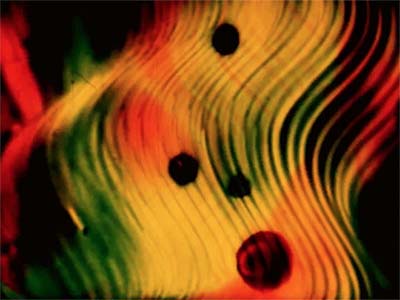
Too often, animators slug their exposure sheets according to the length of the dialogue and how long it takes to perform an action, with no thought given to pacing or rhythm. Len Lye is operating on a much more sophisticated level. He represents complex syncopated Latin and jazz rhythms visually with abstract shapes that move. The technique of painting little doodles of shapes on film gives it a deceptively simple appearance, but the planning going on under the hood must have required fourth dimensional thinking. Imagine if instead of the action in an animated film happening at a normal pace dictated by the speed the voice actor performs the dialogue, the animator creates a rhythmic pattern for the action that merges the character’s performance with the beats and accents in the music… Are you beginning to understand the importance of these films now?

In the past, animation was planned out to a musical beat. The music established the pace of the footsteps and the rhythm of the action. The way this was achieved was by analyzing the voices in the music and breaking down the rhythms frame by frame. When Len Lye’s and Norman McLaren’s films first were shown, traditional animators sat up and took notice. They were greatly impressed by how these seemingly simple little films effortlessly accomplished amazingly complex things that the Hollywood animators struggled to do in their character animation. When I was first becoming interested in animation in the early 1980s, there was a Len Lye retrospective where many of his films were screened in Los Angeles for the first time. I attended the screening and was amazed to look around the audience… it was a virtual who’s who of animators from Disney, Warner Bros, MGM and every other major animation studio. These great animators thought there was something to learn from these films. You should too.
MEMBERS LOGIN To Download
JOIN TODAY To Access Members Only Content
SD VIDEO:

The Golden Antelope

Lex Atamanov / Soyuzmultfilm, Russia / 1954
Download this article
Born out of an order from the Soviet State Committee of the Arts, Soyuzmultfilm was created through the combination of the small, independent studios of Mosfilm, Sovkino, and Mezhrabpomfilm. This new studio was an effort to emulate Disney’s success and efficiently produce animation using compartmentalization and “conveyor-style” techniques. Many of the earliest films were vehicles of communist propaganda, but in the post-WW2 era, the studio turned to creating films based on fables and fairy tales.
The Golden Antelope was a story from India’s Jataka Tales about the incarnations of the Buddha. Directed by Lex Atamanov with art direction by Leonid Shvartsman, this version of the story abandons the idea of the central antelope being a representation of the Bodhisattva and instead simplifies the tale to one of a Raja motivated by greed to capture this magical antelope and a young boy who risks life and limb to protect it.

This was not Atamanov and Shvartsman’s first time working together. With Atamanov at the helm, he, Shvartsman, and Alexander Vinokurov produced The Magic Carpet (1948) and The Scarlet Flower (1952) for Soyuzmultfilm. Lex Atamanov had been directing animated pictures since 1933 with The Tale of the Little White Bull, one of the first Russian animated films with sound. Fresh out of the All-Russian State Institute of Cinematography (VGIK), Leonid Shvartsman drew storyboards and designed characters for the first two Atamanov-directed pictures, as well as The Golden Antelope. The titular antelope was not designed by Shvartsman however, it was developed and animated by Natalia Stroganov, a subcontracted artist who was studying under famed Soviet animal-artist, Vasily Vatagin. Leonid Shvartsman would go on to work on over 70 animated films and create the iconic design for the cartoon crocodile, Cheburashka, who has been referred to as the Russian Mickey Mouse. (See previous Reference Packs for these cartoons.)

The Golden Antelope exhibits exquisite animal anatomy with great caricature of motion thanks to Natalia Stroganov’s deft draftsmanship. Take a look at the opening sequence from 0:00-2:08 and study the Antelopes’ fast, exaggerated movement grounded by solid drawing and forms. The production used rotoscoping techniques for its human characters, but the skillful physical acting of the rotoscope actor and the careful adaptation to line by the artists makes the technique mesh well with the hand drawn elements. The palette and color key of the painted backgrounds by Alexander Vinokurov invoke the natural beauty of India while maintaining fairy tale exaggeration. The backgrounds and color in the journey sequence from 16:15-25:00 are a highlight.
MEMBERS LOGIN To Download
JOIN TODAY To Access Members Only Content
SD VIDEO:

Well, Just You Wait Ep.07

Vyacheslav Kotyonochkin / Soyuzmultfilm, Russia / 1976
We continue the Russian Wolf and Rabbit cartoons with episode 09, “Wolf’s House / TV Station”.
The premise of Nu, Pogodi! (which translates into English as Well, Just You Wait!) was pitched by a writing team of satirical humorists to many directors at Soyuzmultfilm, but was rejected every time. Finally in 1969, Gennady Sokolsky agreed to direct a 2 1/2 minute pilot for the series in an omnibus film called “Happy Merry Go Round”. The general consensus at the studio was that the cartoon was “low class” and beneath the dignity of Soyuzmultfilm, but director Vyacheslav Kotyonochkin strongly believed in the concept, so the studio decided to take a chance and allow him to direct a few episodes… and then a few more… and then more.

Kotyonochkin was proven correct. The cartoons were a huge success. Between 1969 and 2006, Soyuzmultfilm ended up making 22 episodes, and in a 2014 poll of audiences all over Russia, Well, Just You Wait! was voted the most popular cartoon series of all time by a landslide. Although the series resembles both Tom & Jerry and the Roadrunner and Coyote series, the director, Kotyonochkin claimed not to have ever seen any of these Hollywood cartoons until 1987 when his son got a video tape recorder and Western tapes began to be imported.

In these Russian cartoons, there’s almost no dialogue, and the action almost always occurs on screen. Static tableaux are rare, as are detailed backgrounds and “on model” drawings. These cartoons focus on expressive poses and movement, and save time and expense by avoiding the careful cleanup required for character model details and overlapping action. The theory here is, if it moves funny, it’s funny… and they are right about that.
Shamus Culhane once lamented that television animation consisted of mostly lip-sync animation. He would have preferred to do away with lip-sync entirely and just have simple drawings that really move. Well, Just You Wait proves that he was correct.
We will have more Wolf and Rabbit cartoons in upcoming Reference Packs.
MEMBERS LOGIN To Download
JOIN TODAY To Access Members Only Content
SD VIDEO:

Yusei Kamen Ep.1 & 27

Takaharu Kusunoki / Television Corporation of Japan / 1966
"People call me Yusei Kamen!" our protagonist shouts to the heavens in the opening of this rarely seen 1966 space age anime. Yusei Kamen, known in the United States as Planetary Asteroid Mask, as we in the United States know it, was produced by TCJ, the Television Corporation of Japan. Founded in 1953, TCJ turned to producing anime programming like Sennin Buraku and Tetsujin-28 (aka Gigantor) in the early 1960s.

Set in the then far-off year of 2001, Yusei Kamen is the story of the discovery of a planet on the opposite side of the sun named Pineron. Interplanetary relations begin well. A Pineronian named Johansen and an Earthling named Maria marry and having a son named Peter. However, 15 years after the discovery of the planet, a nuclear accident on Pineron allows a dictator to seize control of the planet and declare war on Earth. The conflict escalates and members from each planet are captured and interned on the enemy world. The situation is dire until Yusei Kamen appears and defends the Earth against the tyrannical Pineron. Like the character Zorro, his identity remains a secret throughout the entire series.
The series was created by by Takaharu Kusunoki who served as the lead character designer and key animator on the series. Kusunoki began his career as a assistant to Jiro Kuwata, known for Batmanga, a manga comic derived from the American superhero. Yusei Kamen features an early kind of sakuga, the fluid, more detailed sequences of animation sprinkled into anime programs. The surrounding scenes are much more primitive, serving to simply to put across the narrative elements.

The first episode serves mainly to set up the series as a whole but it has some standout moments like the sequence from 2:33-2:55 where the shots transition with foreground elements and warped perspective rather that straight cutting. Also take note of the sequence where the storm trooping Pineronians attack Earth at 16:30- 18:00. The animators used pacing and rhythm to avoid the monotony of reused shots by contrasting frenetic movement and dynamic angles.
Episode 027 features a thrilling spaceship dogfighting sequence at 2:34-5:25. By this point in the series, Kusunoki gas hit his stride and expertly orchestrates fast cuts, camera movement, and depth of motion utilizing the limited budget to its maximum potential. The staging is also much improved over Episode 1 with simpler, clearer layouts and consistent handling of characters. When you watch, compare the two episodes and try to notice the visual improvements Episode 27 has over Episode 1. There is something to be learned from the more economical shots as well.
MEMBERS LOGIN To Download
JOIN TODAY To Access Members Only Content
ANALYSIS:

Yuri Norstein

Curated By David Eisman
Download this article
Yuri Norstein is one of those rare animators whose name is actually known outside of the relatively niche discourse of international animation study. This is even more impressive considering Norstein is Russian, and the majority of his great works were released during the period of the Soviet Union. Modern popular animation discourse tends to exclusively center on American works, with some focus also spared for anime and a select few Western European films. Norstein is one of the few animators who transcends such location bias. His works like "Hedgehog in the Fog" and "Tale of Tales" stand apart in their broad renown. His film "Tale of Tales" was even voted to be the greatest animated film by an international panel of judges during the 1984 Los Angeles Olympics Art Festival.
Like a lot of animation coming out of Soyuzmultfilm, Norstein’s work is primarily paper cut-out animation, a style wherein a paper-puppet is constructed with hinged and replaceable elements. Norstein was a massive proponent of pushing this style to its limit, as will become abundantly clear in our analysis. The trademark style and themes of his work are cinematic camera work and vibrant depth-of-field, subtle palettes and color contrast, a strong command of musical timing, and the itch to break the mold and push the technical boundaries of his medium.
MEMBERS LOGIN To Download
JOIN TODAY To Access Members Only Content
Whew! That is an amazing collection of treasures! The most important information isn’t what you already know… It’s the information you should know about, but don’t know yet. We bring that to you every other month.
THIS IS JUST THE TIP OF THE ICEBERG!
Animation Resources has been sharing treasures from the Animation Archive with its members for over a decade. Every month, our members get access to a downloadable Reference Pack, full of information, inspiration and animation. The RefPacks consist of e-books jam packed with high resolution scans of great art, still framable animated films from around the world, documentaries, podcasts, seminars and MORE! The best part is that all of this material has been selected and curated by our Board of professionals to aid you in your self study. Our goal is to help you be a greater artist. Why wouldn’t you want to be a member of a group like that?
Membership comes in two levels. General Members get access to a bi-monthly Reference Pack as well as a Bonus RefPack from past offerings in the in-between months. We offer a discounted Student Membership for full time students and educators.
JOIN TODAY!
https://animationresources.org/membership/levels/
FREE SAMPLES!
Not Convinced Yet? Check out this SAMPLE REFERENCE PACK! It will give you a taste of what Animation Resources members get to download every other month! That’s 560 pages of great high resolution images and nearly an hour of rare animation available to everyone to download for FREE! https://animationresources.org/join-us-sample-reference-pack/


 Animation Resources depends on your contributions to support its projects. Even if you can’t afford to join our group right now, please click the button below to donate whatever you can afford using PayPal.
Animation Resources depends on your contributions to support its projects. Even if you can’t afford to join our group right now, please click the button below to donate whatever you can afford using PayPal.









 by
by 




![]()
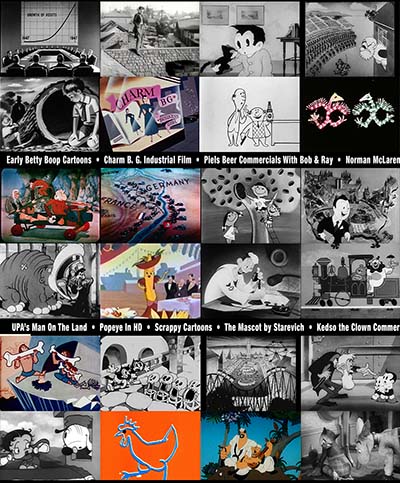

![]()
![]()
![]()
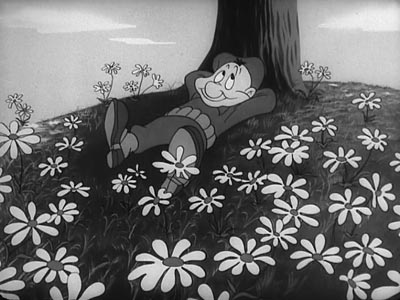
![]()
.
![]()

![]()

















